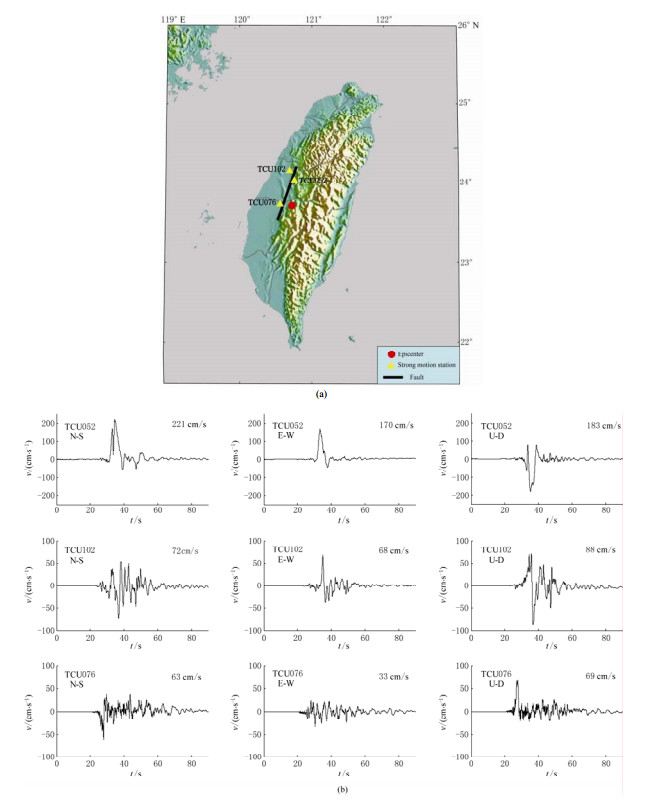
The main fault and locations of strong motions for the 1999 MW7.6 Jiji earthquake (a); Three components of the particle velocity time histories at three stations (b).
Figures of the Article
-
![]() A simple frictional overshoot in the slip-weakening model (a), weΣ is the elastostatic work provided by the elastic crust deformation, wfΣ is the fracture works pent at the rupture front and wrΣ is the relaxation work after the arrest of the slip. A simple frictional overshoot in the slip-weakening model (b), wfΣ is the fracture work spent at the rupture front, and wrΣ is the radiation friction work spent at the arrest (abrupt stress drop model). The radiated seismic energy density is given by eq =weΣ-wfΣ-wrΣ for a frictional overshoot and eq = weΣ-wfΣ+wrΣ for a frictional overshoot.
A simple frictional overshoot in the slip-weakening model (a), weΣ is the elastostatic work provided by the elastic crust deformation, wfΣ is the fracture works pent at the rupture front and wrΣ is the relaxation work after the arrest of the slip. A simple frictional overshoot in the slip-weakening model (b), wfΣ is the fracture work spent at the rupture front, and wrΣ is the radiation friction work spent at the arrest (abrupt stress drop model). The radiated seismic energy density is given by eq =weΣ-wfΣ-wrΣ for a frictional overshoot and eq = weΣ-wfΣ+wrΣ for a frictional overshoot.
-
![]() (a) Slip displacement, Δu, and slip velocity,
(a) Slip displacement, Δu, and slip velocity, 


-
![]() The spatial distribution of the main fault along the Longmenshan fault zone for the 2008 MW7.9 great Wenchuan earthquake. The nearest station is located in Qingping with a shortest distance to the main fault of about 5 km. The strong recordings and simulated waveforms also are displayed inside this figure.
The spatial distribution of the main fault along the Longmenshan fault zone for the 2008 MW7.9 great Wenchuan earthquake. The nearest station is located in Qingping with a shortest distance to the main fault of about 5 km. The strong recordings and simulated waveforms also are displayed inside this figure.
-
![]() Cumulative squared velocity for Qingping recordings and numerical simulation.
Cumulative squared velocity for Qingping recordings and numerical simulation.
-
![]() The main fault and locations of strong motions for the 1999 MW7.6 Jiji earthquake (a); Three components of the particle velocity time histories at three stations (b).
The main fault and locations of strong motions for the 1999 MW7.6 Jiji earthquake (a); Three components of the particle velocity time histories at three stations (b).
-
![]() Cumulative squared velocity for TCU052, TCU102 and TCU076 recordings.
Cumulative squared velocity for TCU052, TCU102 and TCU076 recordings.


 Download:
Download:







